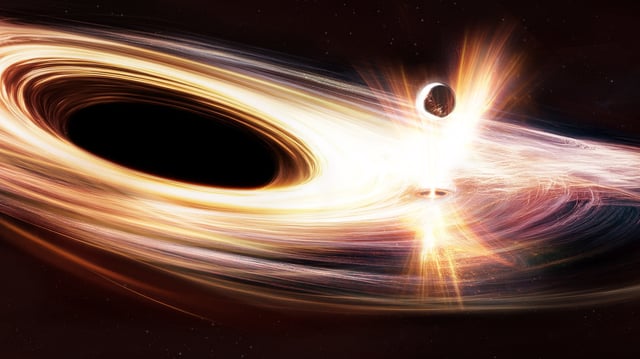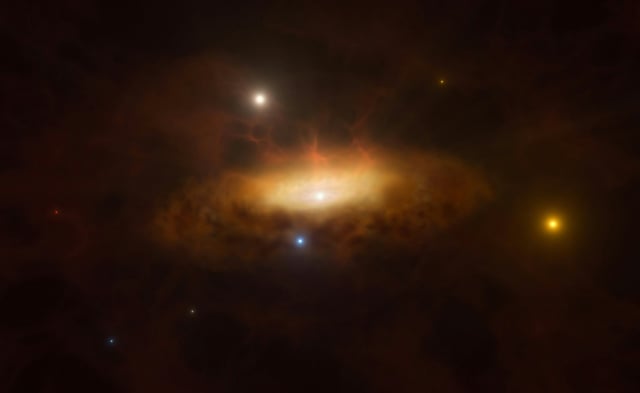Overview
- Ansky, a supermassive black hole in galaxy SDSS1335+0728, has transitioned from decades of dormancy to an active state, emitting extraordinary X-ray flares.
- These quasiperiodic eruptions (QPEs) occur at regular intervals of approximately 4.5 days and are ten times longer and more luminous than typical QPEs.
- Each eruption releases one hundred times more energy than previously observed, pushing the boundaries of current models of black hole behavior.
- Observations suggest the flares are caused by interactions within the black hole's accretion disk, potentially involving a small orbiting object, rather than the tidal disruption of a star.
- Astronomers are using multiple X-ray observatories, including NASA's Chandra, Swift, NICER, and ESA's XMM-Newton and eROSITA, to study this rare phenomenon in real time.

![This artist’s impression illustrates the mechanism that could be at the origin of the powerful bursts of X-ray light seen from a newly awakened black hole named Ansky. A bright disc of purplish, white and gold lines surrounds a black ellipse-shaped area, that looks like a hole in space. A ball of shining material pierces through the disc; an eruption of bright white-to-gold rays encircles the small hole in the disc provoked by the passage of the shining ball.] CREDIT: ESA](/cdn-cgi/image/onerror=redirect,width=640,height=640,format=webp/https://storage.googleapis.com/uploads.mongoosehq.com/url/media/19206438/d3d325f3f42942836d62974ecc4afad6501f8e4987346c28dded8f25510f040d)
